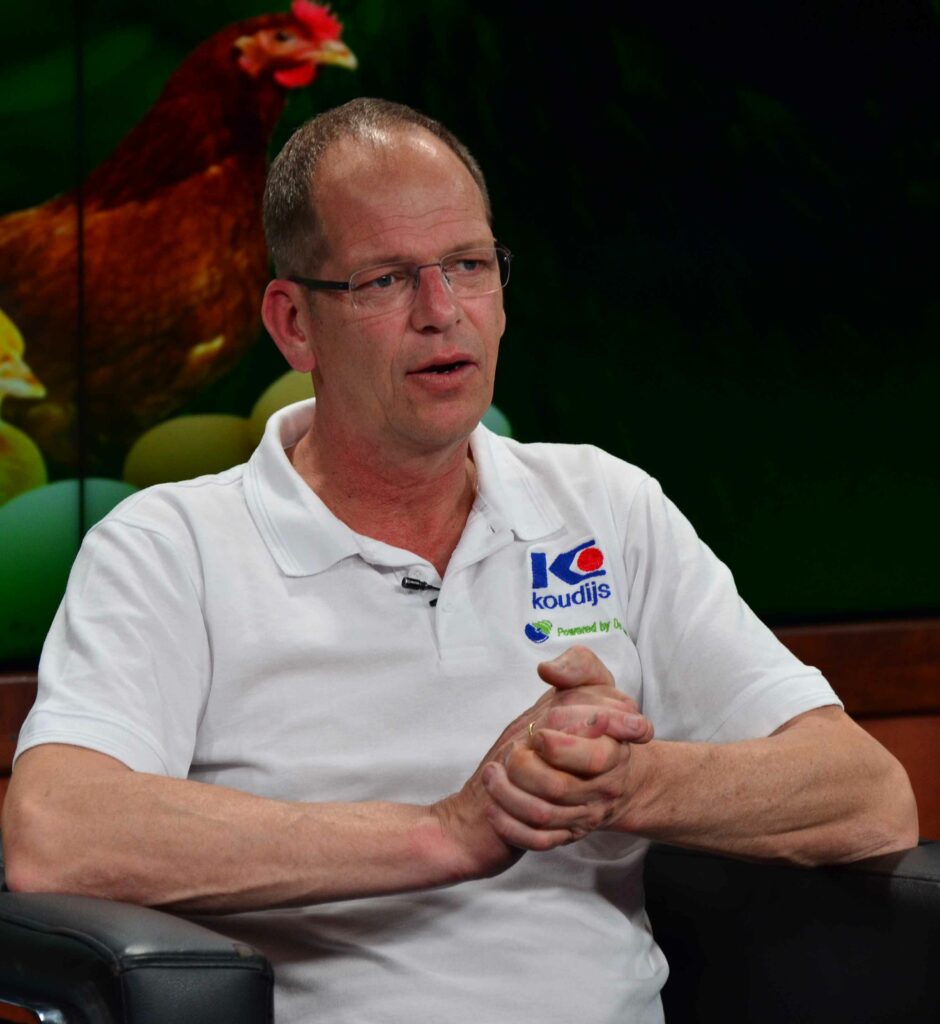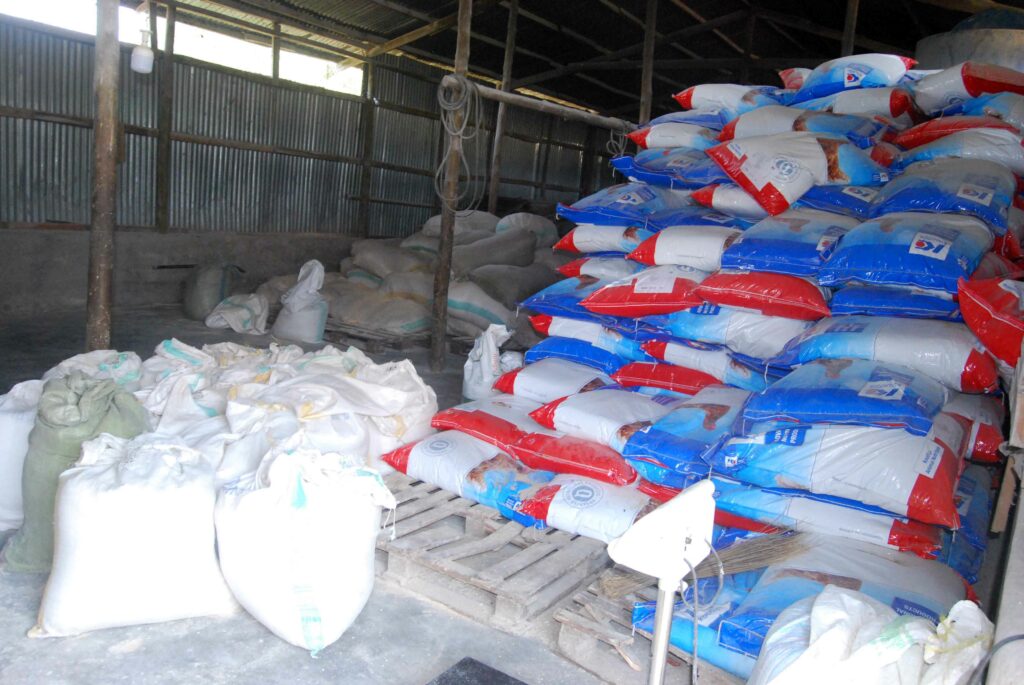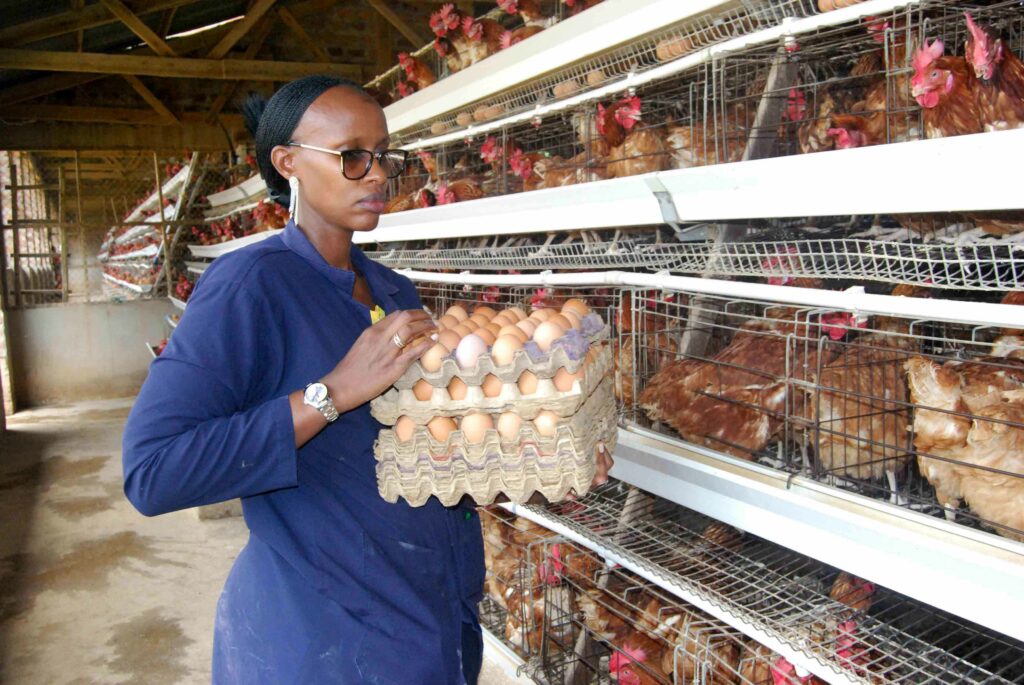By HERBERT MUSOKE and JOSHUA KATO
Agnes Luswata has been keeping chicken and pigs for six years. She feeds them on a combination of concentrates, maize and bran. Maize is composed of whole, broken maize grain while bran is the outer layer of maize after it is processed into flour. However, getting the right combinations to manage the cost of feeds while effectively feeding her flock has been a
challenge.
For any livestock enterprise to thrive, feeds are key. “Feeds account for at least 70% of production costs for commercial livestock. This is why farmers must be careful when selecting feeds combinations for their stock,” Johan Verhoek, Regional manager, Africa for Koudjis.
To cut costs, there is a tendency by livestock farmers to buy cheap feeds. However, Verhoek cautions against cheap feed in the name of saving as it causes farmers to suffer losses. According to experts, cheap feeds compromise the growth of the livestock as well as lowering their production and productivity.
“Livestock get stunted if fed poorly when they are young. If they are broilers they will not attain a profitable weight in six weeks. If they are layers, they will not lay eggs on the right time or in the expected numbers. Pigs will also not gain optimal weight of at least 70kgs by six months,” explains Dr Esther Nakajubi, a veterinary officer and farmer. Nakajubi is also a trainer at the Harvest Money expo.

Johan Verhoek a nutritionist and Koudijs representative in East Africa, explains that although the less one spends, the more the profits, expenditure must be targeted in the right direction to ensure proper growth and thus high production and productivity.
Thus, for the best returns, a farmer must pay deliberate attention to the quality of feeds and the feeding practices.
“Feeds should not only be food, but must have nutrients that foster proper growth, organ formulation and development, boost immunity and promote the bird or animal’s health at all stages,” Verhoek says. He gave the tips during a farming masterclass that was organised by Vision Group, on Bukedde TV last week. The master classes are part of the activities under the best farmers’ competition.
While quality feed is pricey, he says, it cost-effective in the long run as production and production is higher compared to cheaper, low quality feed.
“When you buy quality feeds, the animals or birds will grow faster, less diseases and quicker returns. But poor feeds produce poor growth, lower weight gain and no profits,” he said.
Quality feed
The choice of right feeds should start from day one. For poultry, a farmer should give a pre-starter concentrate which contains nutrients like essential amino-acids and vitamins needed for a proper chick growth and internal organs like the intestines, the reproductive parts, skeleton among others, Verhoek explains.
Mixing their own feeds is the way for farmers to go because they will be sure of the qualities and quantities of the raw materials used, based on the results they want on their farms.
“Sourcing of the raw materials like maize, soya, premix/vitamins or concentrates is important to ensure they are of a good quality. One should buy from a trusted trader because if the quality of raw materials is bad, you are going to get bad quality feed,” Verhoek explains.
Even the basic ingredient of maize, must be of a high quality. He says if one buys maize with low starch and fibre, the livestock will not be supplied with sufficient energy. Also, soya with less nutrients, it will contain less proteins and thus you pigs will produce less meat.
“Don’t only look at the prices while buying the raw materials, consider the weight, colour and other qualities. The heavier the maize/soya the more nutrients it contains”, he stressed.
He stressed that farmers should take a critical look at the quality. Here you can take samples to analyse its quality yourself or take it to a company like Kafiika that will use machines to determine the nutrient and other contents in your products.
“Buy enough raw materials because your animals must get enough feed at the right time for a consistent growth rate.
Storage is another aspect to consider while processing feed. Your storage facility should be free of rodents, birds and insects that may contaminate your feed as well secure from rain, excessive temperatures and humidity because vitamins and premixes are sensitive to such conditions,” he says.

The moisture content is another aspect of feeds that a farmer should look out for. The higher the moisture in grains, the greater the likelihood of the development of Aspergillus flavus and Aspergillus parasiticus fungi that produce aflatoxins which are poisonous to animals. A grain moisture tester costs about sh20,000 in agri-input stores. Best practices Feed management: The definition of good feed differs by animal/bird depending on the size and the type. Therefore, feeds should have the right composition to match the requirements of the livestock to grow well. It should be adjusted to the requirements which are changing with development. It should have the right balance to optimize growth and efficiency to give predictable results.
Feeders and placement: Make sure the number of feeders is sufficient for uniform growth. For example, a chicken should not move more than two metres to find feed. Chick feeders should be 1:40-50 according to size and you must increase the number of feeders as your birds grow. For example, in broilers; at day 14, each eats 60g of feed a day and by day 36 eats 196g.
Therefore, more numbers of feeders will help to get uniform growth and feed efficiency. Prevent a waste of feed by spilling (check around your feeders) adjust the heights of the feeders.
Feed times: Birds should be fed twice a day or make sure your birds have sufficient feed and water all the time. Don’t fill the feeders because rodents will be attracted by the feed. On early days, provide feeding plates and adjust the feeder heights regularly as they grow and make sure feeders are empty at least for an hour a day.
Water: Your chicken should have clean-fresh water all the time. Therefore, refill the drinkers after cleaning them and for those using nipples, always check the water pressure because some nipples could be blocked.

Lighting
Chickens respond to light intensity . Therefore, Verhoek advises that light should be minimised when the chickens are still young. You should ask experts to advise you about lighting on your farm, however, management guides are based on complete light regulated houses.
Here you should create darkness in the chicken house and should be put off in the night because forming of the egg starts when the light turns off for layers and also broilers need to rest such that the feed is utilized.
Genetics/Breed
In addition to good feeds, genetics play a key role in the returns. “With poor genetics, you can’t get the best results despite the best feeds and practices. With poultry, good breeding will lead to less mortality, good weight gain for broilers to fetch a high price when sold at four weeks. For layers, they will start early to lay and take long to lay off,” he says.
Farmers should also adhere to a proper vaccination schedule for their birds especially Mareks, Newcastle Disease etc from the hatchery, advises Dr Geoffrey Mukama, a veterinarian with Koudjis.





